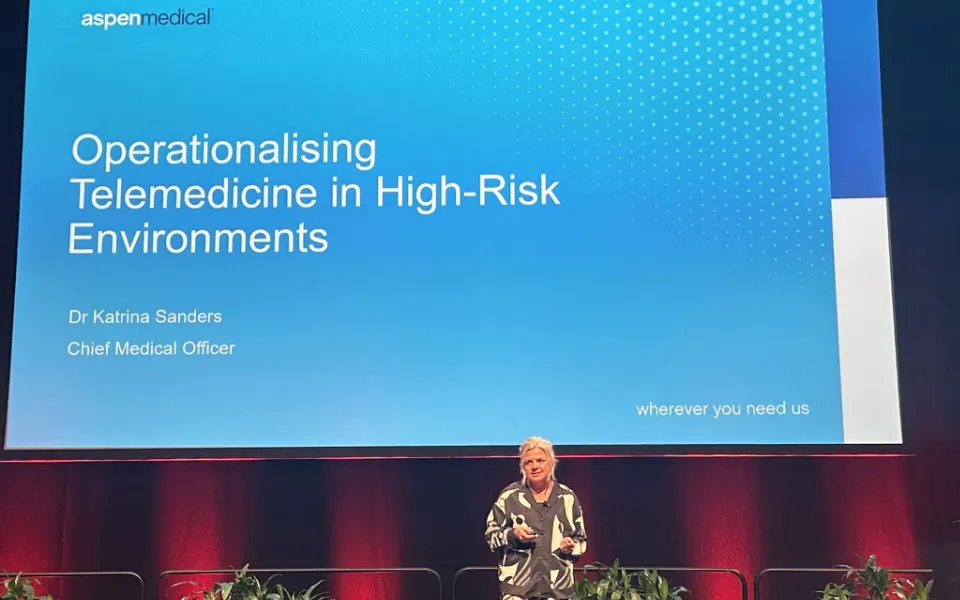
Virtual care redefined as Aspen Medical leads innovation in high-risk environments

Aspen Medical’s Chief Medical Officer, Dr Katrina Sanders, has delivered a powerful case for rethinking virtual care in defence, disaster and remote contexts at the recent Australasian Military Medicine Association (AMMA) conference held in Adelaide.
In her presentation, Operationalising virtual care in high-risk environments: Lessons from Aspen Medical, Dr Sanders challenged traditional assumptions that virtual care is only suited to low-acuity settings.
“Virtual care isn’t just a stopgap or convenience solution. When embedded within a structured operational framework, it becomes a critical enabler of safe, effective care—even in conflict zones, fragile states and isolated deployments,” said Dr Sanders.
With more than two decades of experience delivering health solutions in austere and operationally complex environments, Aspen Medical has operationalised virtual care across multiple defence and humanitarian deployments. Dr Sanders identified four cross-cutting enablers that underpin success in these environments: workforce readiness, clinical quality, clinical governance, and security and privacy.
These pillars are not theoretical; they are tried and tested in environments ranging from the Lihir Medical Centre in Papua New Guinea to virtual support lines handling acute mental health crises and conflict-zone deployments like Ukraine.
Key operational highlights included:
an 81% reduction in aeromedical evacuations and an 84% increase in workforce participation in clinical education at Lihir, demonstrating the role of virtual care in driving excellence in remote areas
data-driven oversight on Aspen Medical’s virtual triage and advice lines, improving both patient outcomes and clinician retention
robust cybersecurity protocols that support second-opinion care in conflict zones while protecting sensitive patient data.
For Defence and Veterans Affairs stakeholders, the implications are clear: virtual care is a scalable, resilient capability that supports force readiness and clinician wellbeing while extending clinical reach into the most challenging contexts.
“These aren’t just lessons in innovation, they’re strategic imperatives. If we want to deliver rapid, scalable health responses in operational environments, virtual care must be part of the solution,” said Dr Sanders.
ENDS

